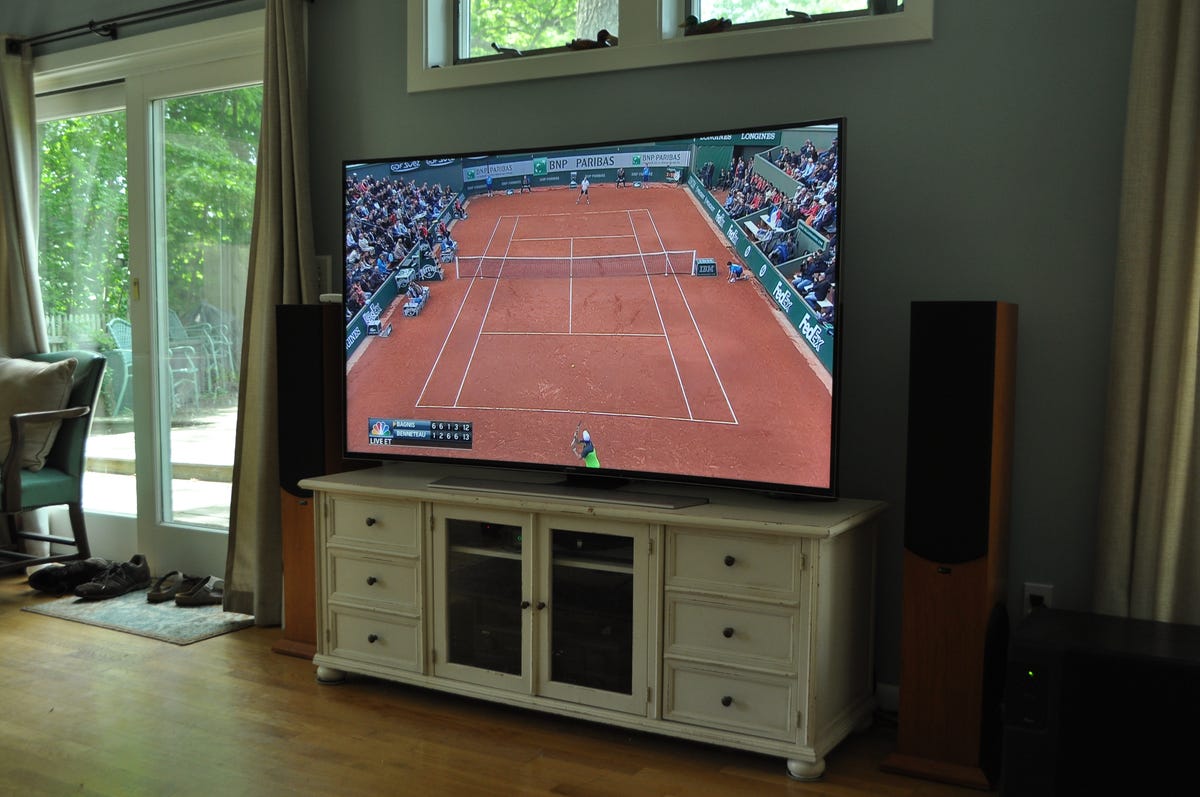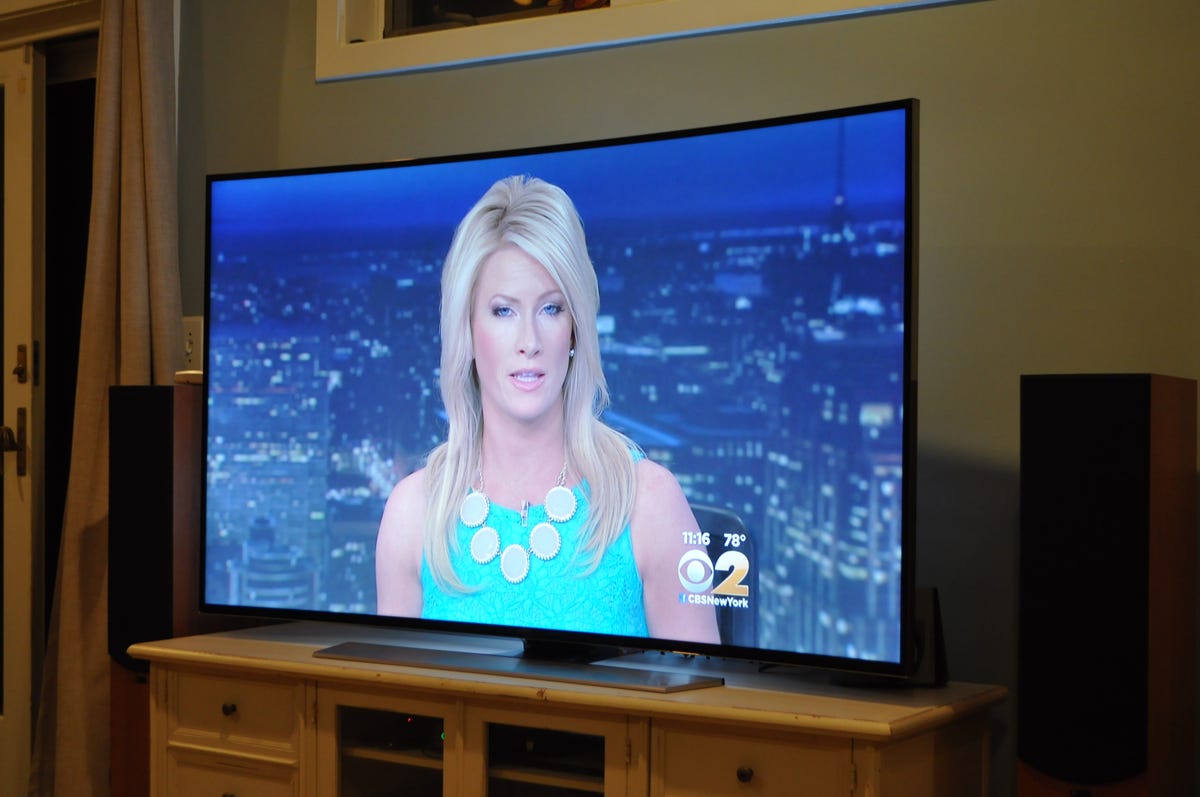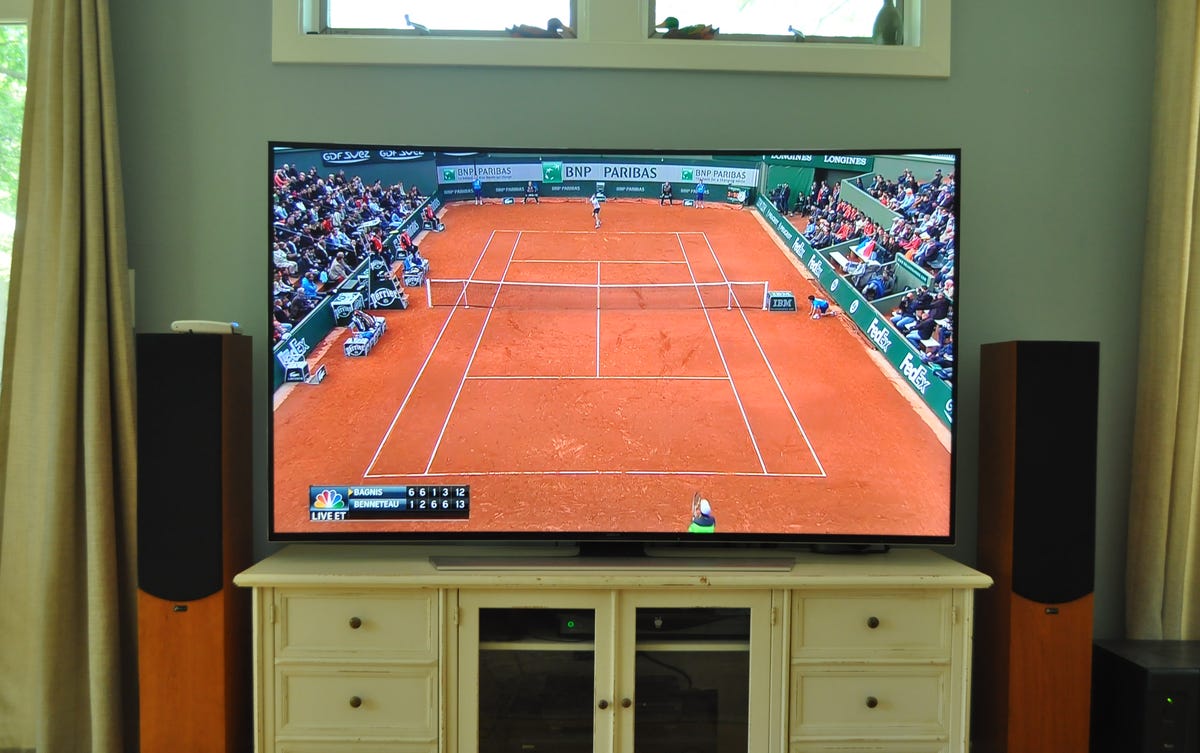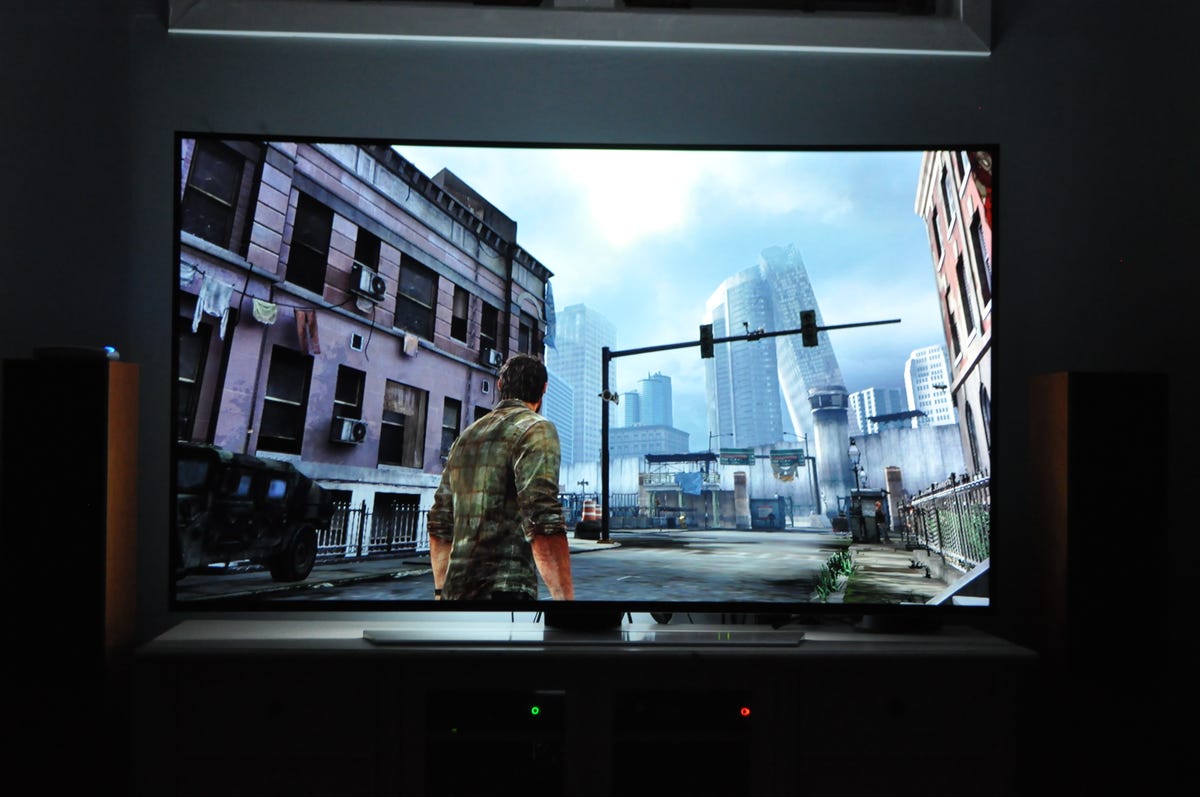
David Katzmaier/CNET
Fourteen days into my experiment of replacing my flat-panel Panasonic plasma at home with a curved Samsung LED LCD, I’ve come to a couple realizations.
First, I want my plasma back, but for reasons that have little to do with geometry. I mostly miss its superior picture quality, particularly for off-angle viewing and uniformity.
Second, despite the radical-looking shape of the new TV, the curve doesn’t have much effect — positive or negative — on me and my family’s enjoyment of TV shows, movies and games.
In the interest of fairness, I’m still going to live with the set for another month or so, and let it insinuate itself more thoroughly into our lives. At that point I expect to be able to say with more confidence whether this latest trend in TVs qualifies as a gimmick.
I’m also going to reserve final judgement on the TV itself, a Samsung UN65HU9000 , for the full formal CNET review, coming soon. Look there for a more thorough comparison of its overall picture quality, especially in comparison to more current plasmas than mine.
In the meantime, here are a few things I’ve learned since I first took delivery two weeks ago.
Editor’s Note: For the record, let’s reiterate this important point: As with CNET’s other review samples, I’m not keeping the UN65HU9000. The loan agreement I signed with Samsung stipulated it be returned by July 12. I’ll send it back before then and the Panasonic plasma will retake its rightful place in my living room. I’ll be using a second UN65HU9000 in the CNET lab to conduct my formal review, which will appear shortly in the usual CNET format.


David Katzmaier/CNET
“So, what’s it like?”
After “Do you get to keep it?” and “How much did Samsung pay you?” that’s the question family members, friends, acquaintances and complete strangers tend to ask when I mention the curved TV experiment.
After answering “No,” and “bupkis,” respectively, I tell them watching a curved TV is a lot like watching a flat one. In fact, the curve has much less of an impact on our daily enjoyment of boob tubery than I anticipated.
On most material, I simply don’t notice it. The curve is subtle enough, and the geometric distortions it causes are gentle enough, to basically not register with most of the programming I’ve watched. Usually I forget I’m watching anything other than a standard TV that’s almost as good as the one I’m used to watching.
I tried playing a few video games as well, including a first-person shooter (Resistance 3), a driving game (Grand Theft Auto V), and a game I actually enjoyed (The Last of Us). Yes, I felt immersed, but no more so than what I can remember feeling on my flat TV. I didn’t feel any more drawn into the virtual world; there was no perceptible “3D effect.”
For the record my wife and kids say the same thing. I don’t expect my 3 and 4-year-olds to notice or care — as long as they get their doses of “Pound Puppies” and “Wonder Pets” they’d just as soon be watching a black-and-white console from the 1950s.
Despite me asking over and over, my wife says she doesn’t notice any differences either, beyond the decor-related observations she made when the TV first arrived. Ditto for my mother-in-law, who claims not to have noticed the curve at all in a dark room. I haven’t had anyone else over to see it for an extended period yet, but over the next month I plan to, and I’ll let you know what they think in a future update.
Unlike my family and friends, noticing differences in TVs is in my job description. So while the impact of the curve isn’t drastic to me, it still has an effect.


David Katzmaier/CNET
Subtle distortions from the sweet spot
From my sweet spot on the couch, seated about 10.5 feet from the apex of the curve, the shape of the screen has a slight bowtie or pincushion look: the edges seem a bit larger than the middle. The shape is made more obvious compared to the straight lines of my entertainment cabinet and a window frame directly above the TV.
I notice the difference when I first sit down, perhaps because I’m already aware of it and paying close attention. Regardless, my awareness of the different shape usually fades quickly.


David Katzmaier
When I notice the bowtie shape again, it’s usually when horizontal lines from graphical elements appear on-screen. Examples include the program guide from my TiVo, a ticker along the bottom of on the screen during any number of sports or news shows, lines on a tennis court, and other similar elements from video games. Rows of words on the screen also cause the curve to be noticeable.
Otherwise I almost never noticed the curve itself. I paid attention to pans, movement across the screen, zoom-ins and other times when I figured I’d see it one way or another. I also didn’t notice any additional “immersion” compared to what I’ve experienced in years of watching the same shows on my same-sized flat TV. Maybe side-by-side the differences would surface — but when it stood alone, the curve from on-angle was subtle.
I did notice the curve more when I sat closer to the TV, something I plan to explore further during the full review. For the record, Samsung neglects to specify an ideal seating distance for its curved TVs.


David Katzmaier/CNET
Bigger bends from off-angle
When I moved from the sweet spot the distortions grew. From my room’s furthest-flung TV-watching spot, a chair to the right of my sectional, the curve was a lot more noticeable. The near edge seemed larger than it should be, and the middle to far middle seemed too small, before growing again at the far edge.
The overall effect was stranger than what I remember when watching my flat TV from the same seat, and strange from this relatively close angle. Beyond the slightly warped shape of the entire TV itself, horizontal lines again accentuated the distortion further.
The difference was a lot less obvious from the two other main seating positions on the sectional itself, including my favorite comfort spot, a lounge-friendly bench on the far left. That said, I’m sure numerous living rooms have seating positions even further off-angle than my furthest chair, and from those seats the image would look even more distorted.


David Katzmaier/CNET
The curve reduces reflections
Just about the only improvement I noticed was the curved TV’s ability to reduce reflections better than my old plasma. Yes, it has a superior screen finish, resulting in better contrast in bright rooms, but the shape itself has the biggest impact on bright-room viewing.
From the sweet spot, my old flat TV caught the reflection of one of the lights in the next room. I could clearly see the light itself, and so I’d have to get up to turn it off to avoid it driving me crazy (yes, I’m in therapy).
The curved TV doesn’t “catch” the light, or most of the other reflections my flat TV did. As my 4-year-old continues to notice, and take advantage of during impromptu selfie dance sessions, it instead squishes them into a funhouse-mirror shape. The result is fewer bright reflections on the screen, and the reflections that do appear are dimmer.


David Katzmaier/CNET
Are the distortions all in my mind?
After I published the first installment of this experiment, Samsung arranged a lunch meeting with myself and some CNET colleagues. There Dan Schinasi, senior manager of TV product planning, defended the science behind curved TVs.
He said a study found an increase in immersion of as much as 4 percent, depending on seating distance. He also said that compared to a flat TV, viewing angles would improve, reflections would be reduced, and that some of the distortions I noticed were actually worse on flat TVs.
I’m sure my years of experience and thousands of hours watching flat TVs has caused me to become used to any distortions they might introduce. That’s one reason why I agreed to partake in a longer-than-usual-term test of the TV at home.
On the other hand, I’m also sure that what I see every day watching the curved Samsung TV — the subtle bends in the shape of some on-screen objects from the sweet spot, as well as the more obvious distortions from off-angle — are as real as any other perception I have. And that’s what matters, isn’t it?
Well that, and the bottom line. After a $200 price drop in the last two weeks, Samsung is currently asking $4,300 for the 65-inch version of the curved HU9000 . The price of the flat HU8550 has remained stable at $3,500. If someone asked me now, I’d say the curve alone isn’t worth $800.
Only time will tell if my perception changes. I’ll let you know in a few more weeks how it’s going.




